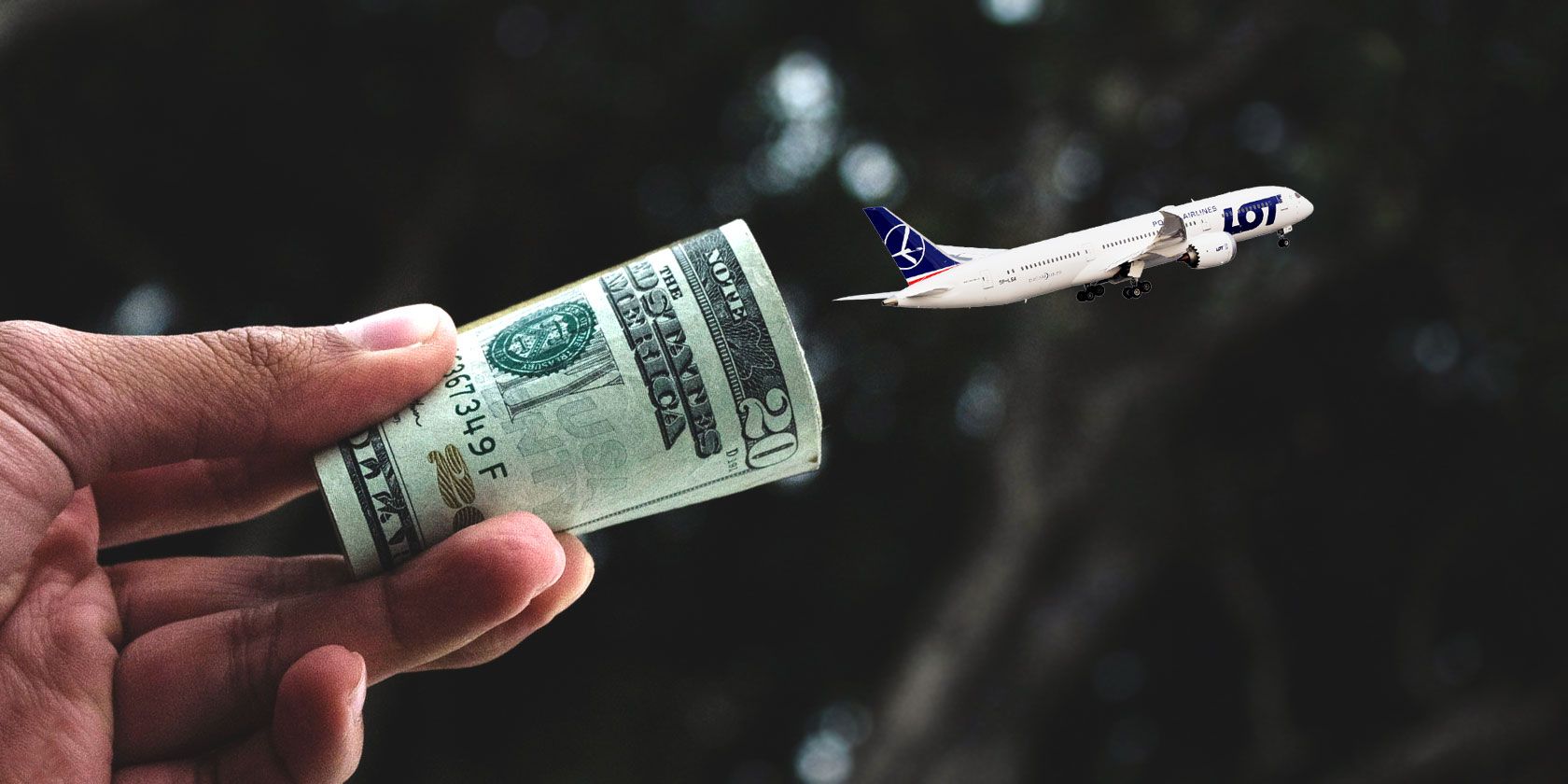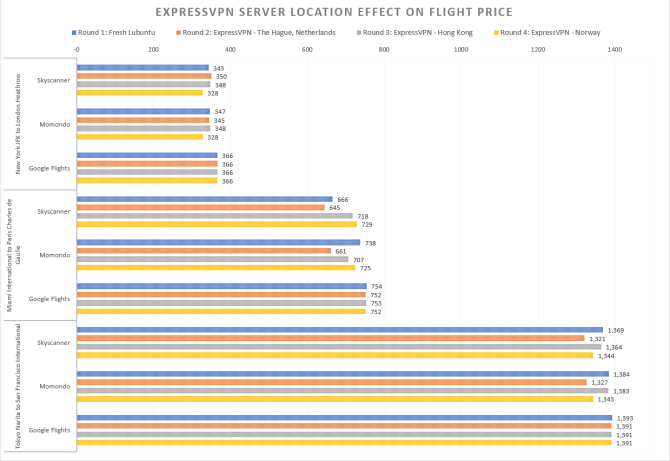
Planning a trip aboard has never been easier. You can check out car hire, hotels, excursions, and importantly, your flights, all online. Most of us now head to a flight comparison site, plug in our destination and begin poring over results; everyone likes insanely cheap flights.
You check the flights once, and the fare seems good. But each time you check again, the price has crept up. It’s almost like the airlines are tracking your interest and raising the prices.
Is it just a trick of the mind? Or is it real? Read on to find out how you can use a VPN to find those super cheap airline tickets.
Airlines Don’t Use Cookies to Increase Prices
The idea that airlines and the comparison sites are using cookies to track our interest in specific routes isn’t new. Understandably, no airline has ever confirmed that this practice is real. Similarly, no price comparison site will confirm that they actively gouge their customers—it would be a savage act of terrible PR.
In fact, the world’s most popular flight comparison sites, Momodo, and Skyscanner both maintain documents stating the opposite. You can read the Momondo page here, and the Skyscanner page here. Both pages comprehensively deny that they use cookies to refine flight prices. Other sources corroborate the flight comparison sites.
“If the airlines were to raise prices because of browser cookies (targeted individually) there would be air travel whistle-blowers and senators running to microphones for legislation to prevent it,” says FareCompare CEO Rick Seaney. “What people see when they shop multiple times, and prices are changing is a reflection of inventory changes, data caching techniques and the fact that prices generally get more expensive closer to departure date, even within a day.”
It doesn’t always feel like that though. Prices appear to change within minutes, much to the chagrin of consumers on the hunt for insanely cheap flights.
Airlines Do Use Dynamic Pricing and User Profiling
For all the airlines like to deny how cookies are used against potential customers, there are some strong indications otherwise.
For instance, in 2018, airline revenue management software provider, PROS, confirmed that many of their clientele now use dynamic pricing. Dynamic pricing structures do consider user location, customer accounts, previous flight data, shopping trends, and more, to create specialized individual flight prices that differ from customer to customer. PROS clientele includes Lufthansa, Virgin Atlantic, Qantas, Emirates, Southwest, and many more.
Currently, each airline has just 26 fare classes. That’s one for each letter of the alphabet (literally). Airlines can update the prices for each fare class four times per day for domestic flights, and hourly for international flights. The current flight pricing structure was put into place in 1978, after The Airline Deregulation Act. However, airlines are finding it difficult actually to shift from that system—but that time is now.
“2018 will be a very phenomenal year in terms of traction,” said John McBride, director of product management for PROS. “Based on our backlog of projects, there will be a handful of large carriers that move toward dynamic pricing science.”
Flight Route Profiling
Flight route profiling has existed for a long time. For instance, a flight from London to Lanzarote is primarily marked for leisure. Airlines know that demand during school holiday periods will dramatically increase. They also know that parents will look to find the best deals months in advance and as such, prices around those periods remain high, despite the number of available seats and current demand.
A switch to dynamic profiling is unlikely to change this scenario. It could, however, impact in other ways. If you’re checking out flights on a high-end Mac, in San Francisco, the dynamic pricing might assume you have higher income and show you higher prices. How about checking prices for a return overnight trip from New York to Chicago? Dynamic pricing might assume you’re a business person, check your previous flight purchase history, and show you price knowing that you will pay it regardless of cost.
Trying to book flights for today with @AmericanAir to go to philly for my grandmas funeral with @ItsArielPlays
Within 15 minutes they raised the price per ticket by $250… scam…
— MooseCraft (George) ? (@ItsMooseCraft) May 16, 2018
Using a VPN to Find Cheaper Flight Prices
If the airlines use dynamic profiling, you can fight back by using a VPN to change your location. For instance, you can use ExpressVPN (save 49% on ExpressVPN using this link) to change your IP address as to appear from one of 94 countries.
Here are a few examples of price differences I found using ExpressVPN, with the locations and the differences. I ran the same price comparisons using a fresh Lubuntu Linux installation, with a completely new browser.
Our test flights are:
- New York JFK to London Heathrow
- Miami International to Paris Charles de Gaulle
- Tokyo Narita to San Francisco International
All departing on September 11th and all returning on September 18th, using the exact same flights for each flight price check site. Check out the difference in price between Skyscanner, Momondo, and Google Flights using the scenarios. (Note: I had to use Google’s ATX Matrix for the ExpressVPN Hong Kong server as Google Flights are unavailable in Hong Kong—it returns the same prices though.)
Prices below are from Skyscanner, Momondo, and Google Flights, respectively.
Round 1: Lubuntu VM, Firefox Browser
- New York JFK to London Heathrow: $343 | $347 | $366
- Miami International to Paris Charles de Gaulle: $666 | $738 | $754
- Tokyo Narita to San Francisco International: $1,369 | $1,384 | $1,393
Round 2: Lubuntu VM, Firefox Browser, ExpressVPN
ExpressVPN location set to “Netherlands—The Hague.”
- New York JFK to London Heathrow: $350 | $345 | $366
- Miami International to Paris Charles de Gaulle: $654 | $661 | $752
- Tokyo Narita to San Francisco International: $1,321 | $1,327 | $1,391
Round 3: Lubuntu VM, Firefox Browser, ExpressVPN
ExpressVPN location set to “Hong Kong – 4.”
- New York JFK to London Heathrow: $348 | $348 | $366
- Miami International to Paris Charles de Gaulle: $718 | $707 | $753
- Tokyo Narita to San Francisco International: $1,364 | $1,383 | $1,391
Round 4: Lubuntu VM, Firefox Browser, ExpressVPN
ExpressVPN location set to “Norway.”
- New York JFK to London Heathrow: $328 | $328 | $366
- Miami International to Paris Charles de Gaulle: $729 | $725 | $752
- Tokyo Narita to San Francisco International: $1,344 | $1,343 | $1,391
Does Using a VPN Make Your Flights Cheaper?
You can see the data above, but it’s a little difficult to read through. Check out the chart below for a better overview of the experiment.

There are a few things immediately clear.
- Google Flight prices remain extremely constant regardless of location.
- Using a VPN uncovered significant discounts when booking cheap airlines flights from the Netherlands.
- For the most part, discounts are only in tens of dollars, with one or two notable exceptions. However, if you’re booking cheap flights for several family members, these savings do add up.
- Using a VPN doesn’t always create a discount situation.
What do you conclude from this? Check all of your options, at all times, and always double-check across the cheap flight ticket comparison sites. Otherwise, you should check out our rules for finding cheap airline tickets—it’s guaranteed to help!
Read the full article: How to Find Insanely Cheap Flights Using a VPN
via MakeUseOf https://ift.tt/2omKX67
Comments
Post a Comment